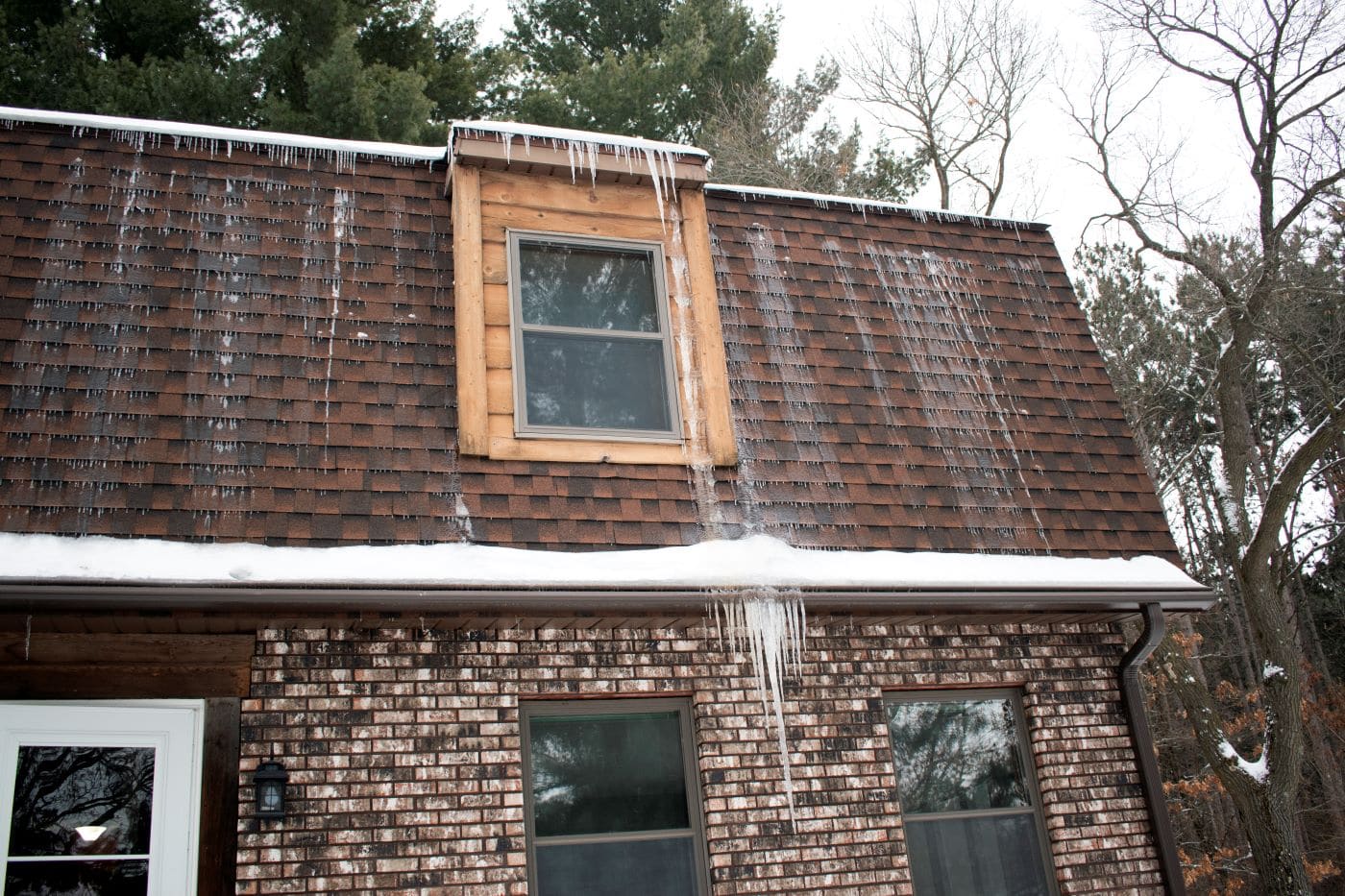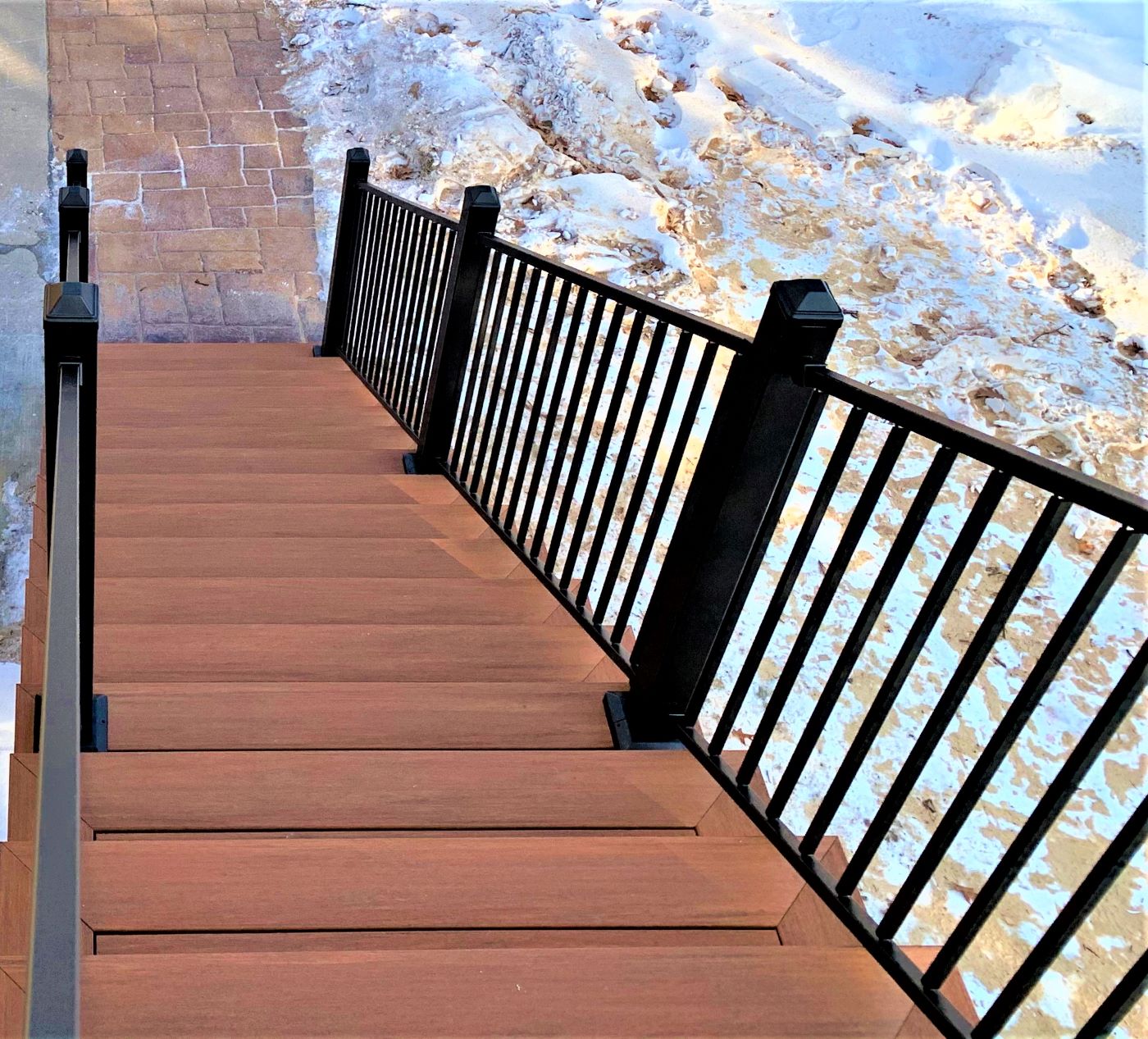Our Guide to Winter Insulation, Ventilation, and Decking
Lindus Construction’s COO, Andy Lindus offers advice to help homeowners in the Twin cities area with their home’s winter insulation, ventilation and decking.
Listen To The Entire Home Improvement Show Here:
The Importance of a Properly Insulated & Vented Attic
While many Twin Cities residents appreciated the warmer temperatures the first weekend in February brought, the day thaw that occurred on rooftops throughout the metropolitan area was cause for concern.
Even homeowners with properly insulated and ventilated attics need to be diligent in roof raking to ensure that standing water can exit the roof during the warmer day temperatures so that the water does not freeze overnight. If this happens, ice dams can form and cause costly interior water damage and mold growth. If an ice dam has formed on your home, avoid using a blunt force with a roof rake which can damage your home’s shingles.

If ice dams are caused by deficiencies within a home’s attic, it’s important to understand that simply adding more insulation is not a guaranteed fix. In some cases, it can actually cause more damage.
If a home’s warm, moist air is traveling upwards to the attic and hitting a warm surface, it’s difficult for attic condensation to occur. However, if additional insulation with a metal backing is added, there’s now a surface for the warm moist air to condensate, which reduces the insulation’s R-value, creating dry rot, and promotes mold growth.
Beware of any insulation contractor that’s not evaluating your home’s ventilation and discussing attic air sealing. These components are critical to a healthy attic.
Go Behind the Scenes on a Twin Cities Insulation and Ventilation Project:
Maintaining Your Deck In Winter
Another area of the home that takes a beating during the winter months is decking. A common complaint with homeowners that have painted cedar decks is that the paint continuously peels off. Fibers coming up out of the wood should be lightly hand sanded to avoid putting the mill glaze back on the wood. A power sander can close off the pores within the wood, making the paint last a shorter amount of time than it should.
When given the option, homeowners should use oil-based stains to refinish their deck because they do a better job of penetrating the wood, making it longer lasting than paint. It’s worth mentioning that cedar decks offer a unique character as they age, a trait composite decks cannot imitate.

For homeowners wanting a wooden deck that’s more of a showstopper than cedar, Ipe can be an excellent selection. This luxury Brazilian hardwood is very dense and heavier than conventional deck woods. For this reason, the framing methods are like those used for composite decking. Well worth the expense, the aesthetics and character make it a cherished component of a home for years to come.
For homeowners wishing to forego deck maintenance, composite decks are a popular option. One popular option known for its reliability and longevity is Zuri®. Zuri® imitates the aesthetics of exotic wood. Its surface can be easily cleaned, should the need arise. However, a drawback to Zuri® deck boards is that they easily become slippery in the winter months. The winter months can also cause Zuri® deck boards to expand and contract more than other composite deck brands.
Contact us today to get started on your next insulation or decking project.
Our team answers homeowner questions every weekend on WCCO 8:30 AM from 9:00 am-10:00 am. Have your most pressing home improvement questions answered by calling or texting 651.461.9226.
